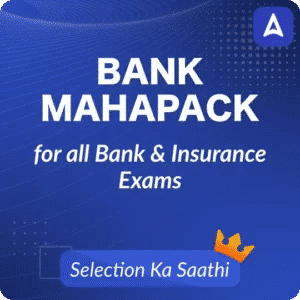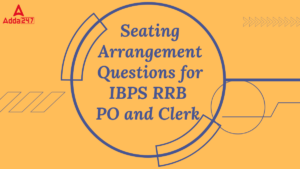Table of Contents
Bank exams are a key pathway to securing a career in the banking sector, attracting lakhs of candidates each year. As the competition intensifies annually, it is vital to complete the application forms for these exams meticulously. Whether you are new to the process or have prior experience, even a minor mistake on the form can lead to disqualification. Therefore, it is important to thoroughly understand the eligibility criteria, exam pattern, syllabus, and other relevant details before submitting your application.
To aid candidates in their preparation, we have compiled a detailed guide outlining the five essential points to consider when filling out bank exam forms for the 2024 exams. This article is designed to offer a step-by-step guide to accurately completing the application forms and avoiding common errors.
5 Crucial Points to Consider Before Filling Bank Exam Forms
This section provides information on what points should be considered before filling out the bank exam forms in 2024. Below we have provided 5 crucial points one must consider:
Understanding Eligibility Criteria
For individuals aspiring to take bank examinations or apply for banking roles, specific prerequisites must be satisfied to be deemed eligible. These prerequisites, known as eligibility criteria, serve as a set of conditions that candidates must meet to qualify for consideration. When it comes to bank exams, two primary factors play a crucial role in determining the eligibility criteria: age restrictions and educational qualifications, alongside nationality requirements. Furthermore, candidates are typically required to provide certain documents to verify their eligibility. In this article, we will delve into these two key factors – age limits, educational qualifications, and nationality requirements – as well as the necessary documentation that candidates must furnish to demonstrate their eligibility for bank examinations.
Understanding the age limit, educational qualifications, and nationality requirements is crucial:
- Age Limit: Every bank examination has a predefined age range within which candidates must fall to be considered eligible. Typically, the minimum age requirement for most bank exams is 18 years (for IBPS RRB Clerks), while the maximum age limit varies from 28 to 32 years, contingent upon the specific examination. Candidates should carefully review the age limit criteria for the exam they intend to apply for.
- Educational Qualifications: The educational qualifications mandated for bank exams can vary depending on the examination. Most bank exams necessitate a minimum of a Bachelor’s degree obtained from a recognized university. However, certain exams may demand specific qualifications such as an MBA, CA (Chartered Accountancy), or a law degree. Candidates should meticulously scrutinize the educational qualification criteria for the exam they wish to undertake.
- Nationality Requirements: Applicants for bank exams must hold Indian citizenship. Some examinations may permit candidates from other nations to apply, but they would need to fulfill certain additional criteria. Candidates should thoroughly review the nationality requirements for the specific exam they are interested in.
IBPS RRB Eligibility Criteria- Check Here
Correct Filling Of Personal & Educational Details
Entering accurate personal and educational details in the application form is crucial for the candidate’s success. Here are some key points to consider when completing the form:
Personal Details: Ensure that your name, date of birth, gender, email address, and phone number are correctly entered in the application form.
Educational Details: Accurately provide information about your educational qualifications, including the degree obtained, the university attended, the year of graduation, and the percentage or grade achieved.
Photograph and Signature: Upload a recent passport-sized photograph and your signature, adhering to the specified dimensions and format requirements in the application form.
Payment of Application Fee
Subsequent to completing the application form, candidates must remit the application fee to finalize the application process. The application fee varies across different bank examinations and can be paid through online or offline modes.
- Online Payment: Candidates have the option to pay the application fee online, utilizing debit cards, credit cards, or net banking facilities.
- Offline Payment: Alternatively, candidates can opt to pay the application fee offline by means of a bank challan or a demand draft.
Accurately filling out the application form and making the application fee payment within the stipulated timeline are crucial steps for candidates aspiring to appear for bank examinations. Candidates should meticulously cross-check their personal and educational details and ensure they meet the eligibility criteria before submitting the application form. This diligence will enhance their prospects of being selected for the examination and subsequently pursuing a career in the banking sector.
Exam Pattern & Syllabus
Grasping the exam pattern and syllabus is vital for candidates gearing up for bank exams. The exam pattern for bank exams differs depending on the specific exam. Typically, these exams feature multiple-choice questions and include negative marking for incorrect answers. The exam is segmented into different sections, each with a designated time limit. Additionally, some exams include descriptive questions to assess a candidate’s written communication abilities.
Overview of Syllabus for Bank Exams
- Quantitative Aptitude: This section evaluates a candidate’s mathematical abilities, encompassing domains such as arithmetic, algebra, geometry, and data interpretation.
- Reasoning Ability: This segment assesses a candidate’s logical and analytical capabilities, covering topics like coding-decoding, blood relations, puzzles, and seating arrangement problems.
- English Language: This component gauges a candidate’s proficiency in the English language, including areas such as reading comprehension, grammar, and vocabulary.
- General Awareness: This section measures a candidate’s knowledge of current affairs, banking-related topics, and general knowledge.
Result Declaration and Subsequent Steps
After taking the bank exam, candidates eagerly anticipate the announcement of the results. This section covers the release of results and cutoff marks, the subsequent steps post-results, and frequently asked questions related to the result declaration and further process.
Declaration of Results and Cutoff Marks:
Bank exam results are typically announced a few weeks after the exam. Alongside the results, the cutoff marks are also published. Candidates who score above the cutoff marks qualify for the next stage of the selection process.
Next Steps After Results Are Announced:
Once the results are out, the following steps in the selection process can differ based on the specific exam and the organizing body. Generally, the subsequent steps include:
- Group Discussion (GD) or Personal Interview (PI): Candidates who meet the cutoff criteria are invited to participate in the GD or PI round.
- Final Selection: Candidates are chosen for the final selection based on their performance in the GD/PI round.
- Document Verification: Following the final selection, candidates must undergo document verification to confirm their eligibility.
In this post, we have outlined five essential points for candidates to keep in mind when filling out bank exam forms. We have addressed various topics such as eligibility criteria, details required in the application form, exam pattern and syllabus, and the process for result declaration and subsequent steps.




 GA Capsule for SBI Clerk Mains 2025, Dow...
GA Capsule for SBI Clerk Mains 2025, Dow...
 The Hindu Review October 2022: Download ...
The Hindu Review October 2022: Download ...
 Seating Arrangement Questions for IBPS R...
Seating Arrangement Questions for IBPS R...


